- Kinds of aloe
- Types of aloe
- The healing properties of aloe
- Aloe vera
- Medicinal forms
- Face masks
- Aloe for hair
- Aloe from acne
- Contraindications
Aloe is an evergreen plant that belongs to the family of lilies and can reach a height of four meters. Useful properties of aloe make it indispensable for use in folk and traditional medicine. The juice of this plant is effective in the treatment of diseases of the digestive tract, eye pathologies and other inflammatory processes. Also, the century-old is widely used in modern cosmetology.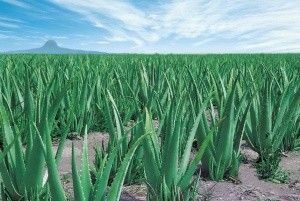 The birthplace of this plant is the Arabian Peninsula. Well cultivated in Asia and Africa.
The birthplace of this plant is the Arabian Peninsula. Well cultivated in Asia and Africa.
In other countries of the world, aloe is an ornamental garden and home plant.
The photo shows that aloe has erect branchy stems and long leaves with stiff cartilaginous teeth at the edges.
A distinctive feature of the plant is the presence of juicy and fleshy pulp.Types of aloe
There are two varieties of aloe: a tree and a house plant.
Treelike
This is an evergreen plant reaching a height of ten meters. Tree aloe has fleshy, large, sharp and prickly on the edges of leaves of bluish-green color, having a length of about 60 centimeters. The root system is quite powerful and highly branched. Blossoms usually in winter with the formation of a fruit in the form of a box containing numerous seeds.
The birthplace of a tree plant - South Africa. Aloe is found in Transcaucasia and Central Asia.Homemade
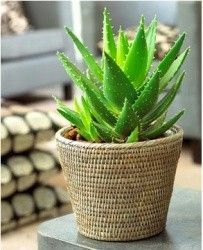 Because the home-grown aloe has a tropical African origin, it is very fond of the sun. It grows in summer outdoors in the fresh air. It is not exacting to regular watering, as the leaves of the plant retain moisture for several days.
Because the home-grown aloe has a tropical African origin, it is very fond of the sun. It grows in summer outdoors in the fresh air. It is not exacting to regular watering, as the leaves of the plant retain moisture for several days.
In winter, a century-old is poured with warm water from above and directly into the pan. With excess water, rotting of the root system is possible. The optimum air temperature in a room in winter is ten degrees above zero.
At home, a hundred-year-old blooms rarely, but grows rapidly, reaching a height of one hundred centimeters per year.The healing properties of aloe
The bactericidal action of aloe is extended to streptococci, staphylococci, diphtheria and dysentery sticks.
Accelerating regenerative processes in the body, the plant is quite effective with:- irradiation,
- inflammation,
- wounds.
The active substances of the perennial stimulate intestinal peristalsis, eliminating atonic and chronic constipation, improve digestion and bile secretion.
Barbaloin is an antibiotic of plant origin that has been isolated from aloe and is effective in the following diseases:- tuberculosis,
- skin pathologies,
- chronic gastritis,
- colitis,
- pancreatitis,
- progressive myopia,
- conjunctivitis,
- vitreous opacity.
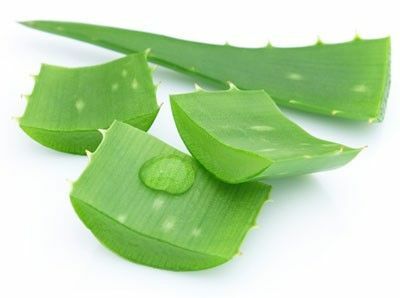 Aloe - an immunomodulator that promotes the healing of the body and its recovery
Aloe - an immunomodulator that promotes the healing of the body and its recoveryFresh aloe, leaves, extracts and thickened sabour juice are used to treat patients and make medicines.
From a three-year-old aloe plant in the late fall, long long leaves are collected that contain many essential oils, enzymes, glycosides, vitamins, amino acids, minerals, salicylic acid, polysaccharides, phytoncides.
- Sabur treats chronic constipation, gastritis with low acidity, chronic colitis.
- Aloe juice is used in the form of lotions with non-healing purulent wounds and infectious pustular skin diseases, which is explained by its bactericidal properties against a number of pathogens.
- Anemia is treated with a syrup consisting of juice and iron.
- Aloe leaves contain active biostimulants that can enhance metabolism in tissue cells, which is necessary for rapid tightening and healing of wounds.
- Damage to the skin by X-rays and sun rays is also well treated with the juice of this healing plant.
- Asthenia, neurosis, headache of unclear etiology - indications for admission.
- Aloe is used to treat diseases of the respiratory system - bronchial asthma, digestive system - stomach ulcers and duodenal ulcers, gastritis.
- Another area of widespread use of drugs from aloe is ophthalmology.
Aloe juice
After cutting the leaves of aloe, a watery, very bitter liquid flows out. This is the plant juice used to make medicines.
Juice is produced by secretory cells, located on the cut in the form of a crescent. The liquid must first be evaporated and then poured into molds to solidify. So get condensed juice, which is called sabur.
Medicinal properties of aloe juice:- eliminates chronic constipation,
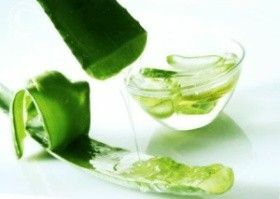 Sabur - thickened aloe juice
Sabur - thickened aloe juice - activates esophageal gland secretion,
- has choleretic action,
- improves digestion,
- alleviates the course and symptoms of chronic gastritis, dysentery, stomach ulcer,
- relieves tuberculosisin the form of a mixture with cuff juice, butter, honey and cocoa,
- is applied externally in the form of lotions for the treatment of trophic ulcers, boils, purulent wounds, burns, and as a compress -and radiation dermatitis and eczema.
For the preparation of aloe juice at home, it is necessary to sustain the leaves of a three-year-old plant in a refrigerator for 12 days, then rinse them in cold water, grind, squeeze through gauze and boil for three minutes in a water bath. Use the resulting juice should be immediately, as it very quickly loses its healing qualities.
Dosage forms
Injections
Aloe extract is produced in injectable ampoules, in the form of tablets, syrups, nasal drops, solution for oral administration. Aloe vera injections help improve blood circulation and tissue repair.
They are prescribed for the following diseases:- eye diseases,
- bronchial asthma,
- ulceration of the digestive system.
Such injections are used for intramuscular and subcutaneous injection. Subcutaneously injected aloe into the stomach, less often in the upper part of the arm, and intramuscularly - into the thigh or buttock.
Dosage is selected strictly individually, taking into account the characteristics of the patient's body, its age and stage of the disease.Drops in the nose
When the first signs of a cold and cold become available, five drops of aloe extract are instilled into each nasal passage. This leads to a reduction in swelling of the nasal mucosa, which makes breathing more free.
The disinfecting effect is the destruction of pathogens and viruses, in particular the influenza virus.Hypersensitivity to aloe juice is an absolute contraindication to the use of such drops!
Gel
Aloe gel contains more than two hundred active components: minerals, acids, vitamins, which are necessary for the human body to regulate the functions of the brain and other internal organs.
Aloe gel:-
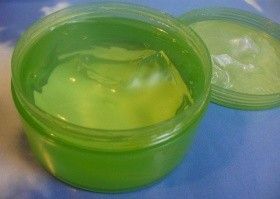 cleanses the gastrointestinal tract, liver with gall bladder, kidneys,
cleanses the gastrointestinal tract, liver with gall bladder, kidneys, - is used to prevent stone formation in the kidney,
- eliminates the symptoms of psoriasis and herpes,
- increases the overall body resistance,
- is recommended for women planning a pregnancy,
- warns cancer.
You can prepare the aloe gel yourself at home. The blade is cut with spines from the leaf of the plant and makes an oblique incision on the large leaves, so that the juice drips down. Then completely cut the leaf along and secrete the flesh of the leaf of white color. Pulp, juice mixed with vitamins C and E in a blender.
Tincture
Aloe vera is an alcoholic or vodka solution prepared from the leaves and stems of a plant.
The best basis for infusions from medicinal herbs, enhancing their medicinal properties - 40-70 degree alcohol.
Aloe vera stimulates the body's defense systems, increases appetite and improves digestion.Prepare it this way: cut the lower leaves of the plant, wrapped in dark paper and put in the refrigerator for two weeks. Then the leaves are ground, poured vodka in the proportion of one to five. Insist means ten days in a cool place.
Take tincture for half an hour before meals.
Application in cosmetology
Face masks
Aloe is a medicinal plant that has been used in cosmetology for a long time. Masks and face creams are more suitable for sensitive skin, combined and prone to allergies.
Cosmetics with aloe:
- enrich the skin with nutrients,
- protect against the influence of environmental factors,
- brightens pigment spots,
- helps with pustular rashes, psoriasis and eczema.
The most popular cosmetics based on aloe vera are masks for dry and fading skin. Aloe juice is mixed with honey, glycerin, oatmeal, pure water, then whisked all with a blender, insist for ten minutes and apply a thick layer on the cleansed skin. Hold the mask for half an hour.
Aloe for hair
Aloe has a positive effect on the scalp, eliminating dandruff, hair loss, alopecia, brittleness. Aloe nourishes the hair follicles, heals the split ends, makes the hair more dense, strong and shiny.
For medicinal purposes, daily rub aloe juice into the scalp. After the appearance of the first results to improve the condition and structure of the hair, the juice is applied twice a week. Duration of treatment - three months.
To reduce the fat content of hair rub aloe juice, mixed with vodka, two hours before washing the head.
Those who are seriously concerned about hair problems, in particular, their loss, we offer to read the article If vitamins are not taken, Hair can start falling out!Aloe from acne
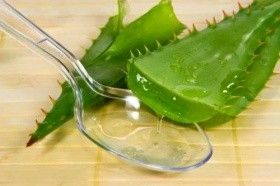 Aloe juice from acne is very effective due to its cleansing, healing, antibacterial, anti-inflammatory and therapeutic actions. It is these properties of aloe that prevent the appearance of scars, scars, spots after acne.
Aloe juice from acne is very effective due to its cleansing, healing, antibacterial, anti-inflammatory and therapeutic actions. It is these properties of aloe that prevent the appearance of scars, scars, spots after acne.
The main way to get rid of pimples is regular rubbing of the face with a small piece of aloe, on which the flesh is cut.Face mask for acne is prepared as follows: cut the leaves of aloe, crush them, add protein and pass through a blender to get a gruel. Then add a couple drops of lemon juice to it, put on clean face skin, hold for half an hour and rinse.
Contraindications
Aloe drug medicines have the following contraindications:
- liver and gallbladder disease,
- cystitis,
- hemorrhoids,
- initial stage of pregnancy,
- menstrual cycle,
- heart and vascular disease,
- kidney pathology,
- hypertension.
